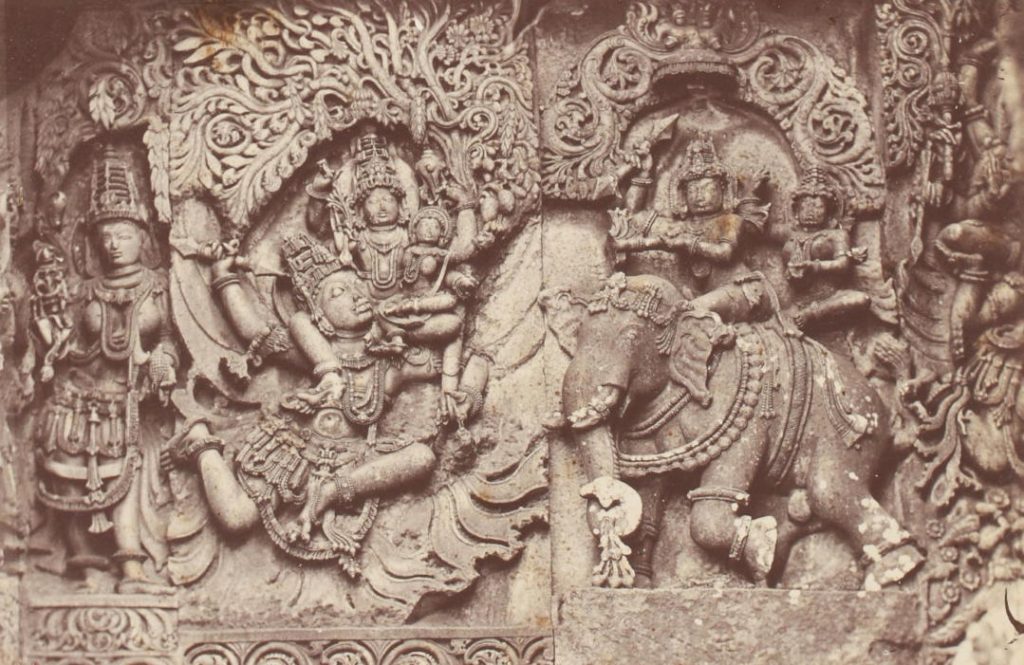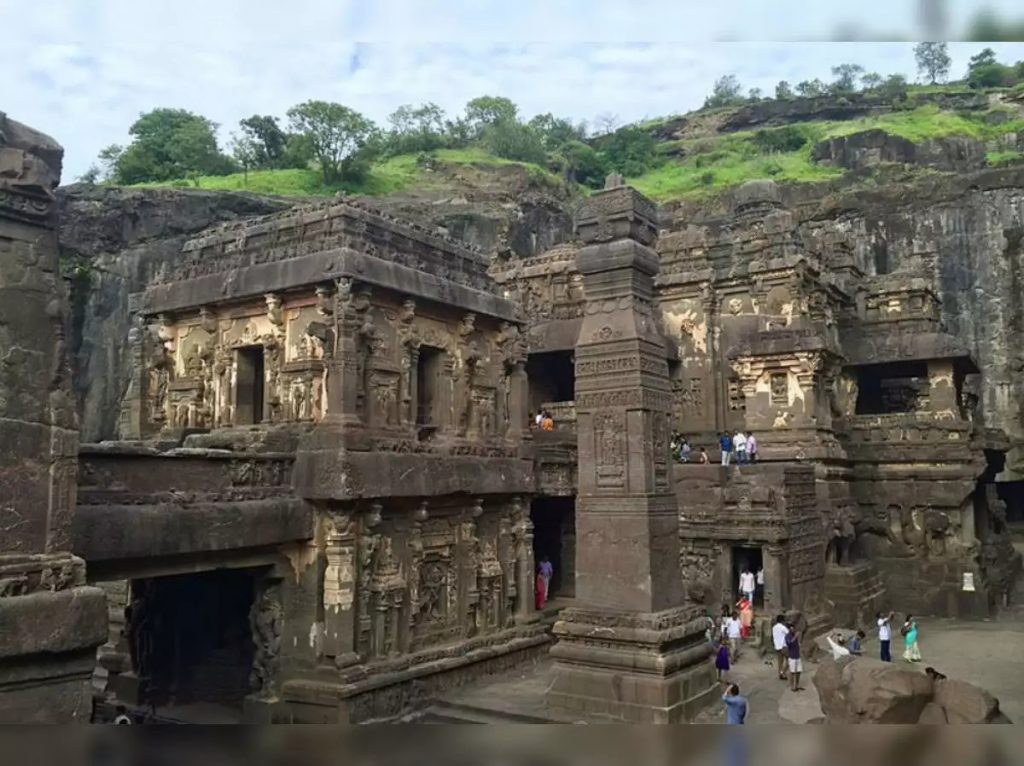Design inspiration is everywhere—sometimes in modern art galleries, Pinterest boards, or urban cafés. But some of the most powerful ideas often lie in places we overlook or walk past every day. India’s ancient temples are more than places of worship, they are living museums of craftsmanship, culture, and complex design thinking. As interior design students, we often look outward to global trends and contemporary aesthetics. But sometimes, the richest inspiration lies right here—engraved in the weathered stones of centuries-old temples. Indian temples—majestic, intricate, and deeply symbolic—are a treasure chest of design wisdom.
More than a place of worship, temples were designed as experiences crafted to inspire awe, tell stories, and connect people to a greater sense of meaning. These details teach us how to think about surface, scale, storytelling, and above all, purpose in design.
Let’s explore how ancient temple architecture can shape our understanding of detail in interior design.
1. The Power of Storytelling
Temple carvings are visual narratives. They depict gods, goddesses, festivals, musical instruments, animals, dancers, and everyday life. Everything has a reason for being there. Each figure, each curve tells a story—often rooted in mythology, history, or human emotion.

In today’s interior design, storytelling still matters. When designing a home, a café, or even a lobby, the surfaces we create—walls, floors, and ceilings—can communicate emotion and identity. A well-designed detail, like a mural, motif, or custom panelling, can make a space feel personal and memorable. By borrowing this narrative approach, we can turn static interiors into expressive environments.
2. Designing with Intention
Walk into any ancient Indian temple, and you’ll quickly realize—it’s not just a collection of beautiful carvings and towering structures. It’s an experience. And that experience is not accidental.
The temple journey is symbolic: you begin in the bustling outer courtyard, pass through progressively quieter and more focused spaces, and end at the sanctum, a quiet, dimly lit inner core. It’s a powerful spatial metaphor—a movement from the outer world of noise to the inner space of reflection. For today’s interior designers, this concept still holds incredible value.
By learning from temple layouts, we can create interiors that flow naturally, that guide people through a journey, and that feel balanced and intentional. For example, a home can have a clear path from a lively, social entry zone to a calm, private bedroom retreat. Offices can use circulation paths that reduce distractions and promote focused zones. Just like the temple’s layout moved you inward, your space planning can move people emotionally, from energy to calm, from curiosity to clarity.
3. Design in Every Layer
One of the most magical aspects of temple carvings is their play with depth. Unlike flat designs, temple sculptures often have multiple layers—foreground, middle ground, and background—creating dramatic shadow play. This multidimensionality adds rhythm and energy to the space. As designers today, you, too, must think beyond the flat and into the dimensional.

The Hoysaleswara Temple (Halebidu, Karnataka) is carved with incredible precision: multiple horizontal bands display processions, floral motifs, mythological stories, and celestial dancers—all on one wall. Modern spaces can play with wall treatments like 3D wall panels, textured plaster, or jaali partitions. The Chera architecture–inspired resorts in Kerala use deep, layered wooden panels that echo this principle beautifully.
4. Symbolism in Repetition
In Indian temples, every motif is layered with meaning. These symbolic elements are carefully placed to represent beliefs, stories, and emotions, turning architecture into a language of its own.

For instance, the lotus motif stands for purity and spiritual awakening, growing beautifully even from muddy waters. This symbol appears again and again across the temple’s architecture. You’ll find it delicately carved on pillars and ceilings at the Virupaksha Temple in Hampi, and in the marble marvels of the Dilwara Jain Temples in Mount Abu, where its repetition adds both beauty and deeper meaning to the space.
Interior design students can draw inspiration from these traditional motifs and reimagine them in modern contexts. Mandala forms, lotus outlines, peacock feathers, or even a kalash silhouette can all be abstracted into elegant design elements. Think of them as surface patterns on wallpapers, floor inlays, headboards, or as accents in embroidered cushions and fabrics.
5. Craftsmanship That Lasts
In today’s world, design often races against the clock. With powerful software, 3D printing, and modular systems, interiors can come together in weeks, if not days. But if you slow down and look at India’s ancient temple architectures like the breathtaking Ellora Caves or the intricately detailed Konark Sun Temple, you’ll notice something very different: patience, precision, and pride.

Even in contemporary spaces, craft still holds power. A minimal studio apartment can feature handmade tiles that tell a tactile story. A sleek office can feel warmer with artisan-made lighting or a custom wood joinery table that brings in texture and depth.
6. Light and Shadow Play
Temple architects knew how to use natural light with precision. They designed small stone perforations, latticed screens, and inner courtyards that allowed sunlight to enter selectively. As the day progressed, shafts of light would dance across the stone surfaces, highlighting carvings, revealing textures, and casting dramatic shadows. It turned the temple into a living, breathing space—one that changed character with the movement of the sun.

For design students, this opens up a new world of possibilities. Lighting isn’t just functional, it’s experiential. Even with artificial lighting, the principles remain. You can layer lighting, ambient, task, and accent, to mimic the way light naturally reveals a space. Use uplights on textured walls, or spotlights on decor elements to create that same sense of quiet drama. Light, when used well, doesn’t just brighten a room. It gives a soul. And temples are a timeless reminder of how powerful that can be.
As a design student, you are trained to look forward to trends, technologies, and new materials. But there’s immense value in looking back, especially when it comes to detail. Ancient Indian temples are masterfully designed environments where every detail is intentional. So the next time you sketch a wall elevation or choose materials for a space, ask yourself: What would a temple carver do? You might just discover that the answer lies, quite literally, in stone.
At ARCH, we nurture curious minds and creative thinkers by connecting design education with deep cultural roots and contemporary practice. Interior Design courses at ARCH College of Design & Business are crafted to inspire students to explore, question, and innovate—drawing from India’s rich heritage while staying attuned to global trends. With hands-on learning, expert mentorship, and real-world exposure, we prepare students to enter the design world and to shape it meaningfully. Join us to explore, create, and redefine the world of design—where tradition meets innovation, and your ideas find their voice.
